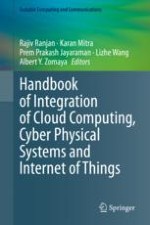This handbook covers recent advances in the integration of three areas, namely, cloud computing, cyber-physical systems, and the Internet of things which is expected to have a tremendous impact on our daily lives. It contains a total of thirteen peer-reviewed and edited chapters. This book covers topics such as context-aware cyber-physical systems, sustainable cloud computing, fog computing, and cloud monitoring; both the theoretical and practical aspects belonging to these topics are discussed. All the chapters also discuss open research challenges in the areas mentioned above. Finally, the handbook presents three use cases regarding healthcare, smart buildings and disaster management to assist the audience in understanding how to develop next-generation IoT- and cloud-enabled cyber-physical systems. This timely handbook is edited for students, researchers, as well as professionals who are interested in the rapidly growing fields of cloud computing, cyber-physical systems, and the Internet of things.
